Are you curious about the history of industry and innovation? These are the top industrial heritage museums in Lower Saxony:
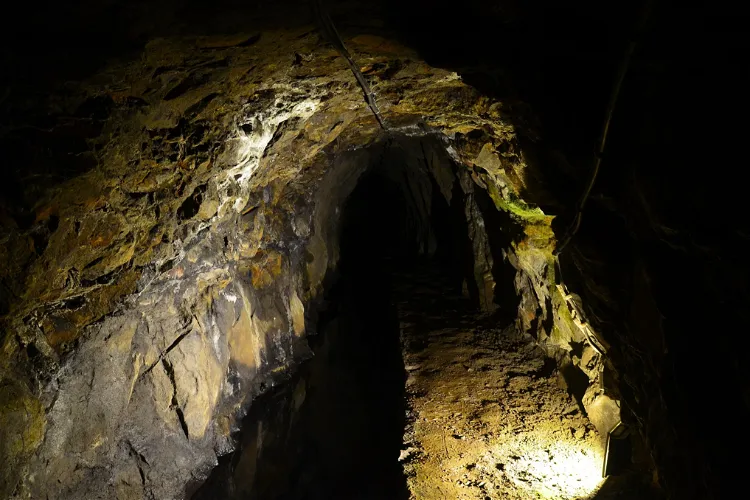
19-Lachter-Stollen
Clausthal-ZellerfeldIn 2010, the 19-Lachter-Stollen was declared a UNESCO World Heritage Site as part of the Upper Harz Water Management System. This recognition underlines the historical and cultural significance of the tunnel and its role in the mining industry. The 19-Lachter-Stollen is also part of the World Heritage Route of the UNESCO World Heritage in the Harz.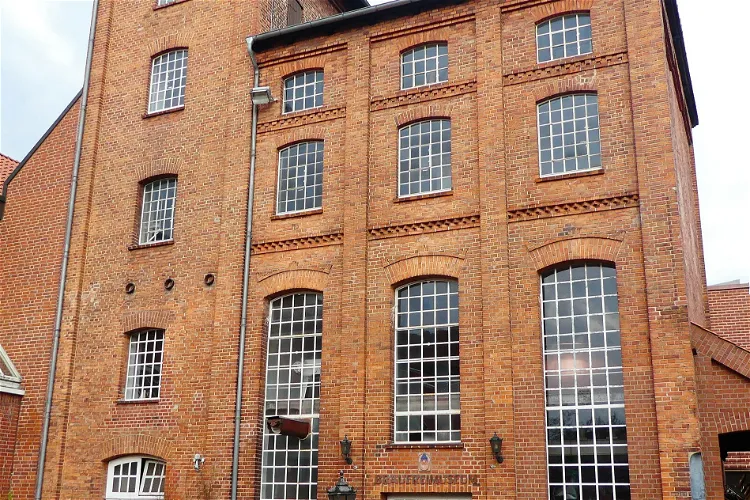
Brauereimuseum
LüneburgThe Brauereimuseum Lüneburg is situated in the former Lüneburger Kronen-Brauerei in Heiligengeiststraße. This location is in the heart of the historic old town, making it easily accessible for tourists who are exploring the city. The museum's location adds to its charm and historical significance, as it is housed in a building that was once a bustling brewery.
Fehn- und Schiffahrtsmuseum – Westrhauderfehn
WestrhauderfehnThe Fehn- and Shipping Museum in Westrhauderfehn is a unique institution that provides insights into the history of the Fehn culture, regional shipbuilding, and shipping of the once most important inland port of East Frisia. Visitors can learn about the rich maritime history of the region, including the development of shipbuilding and the significance of the inland port.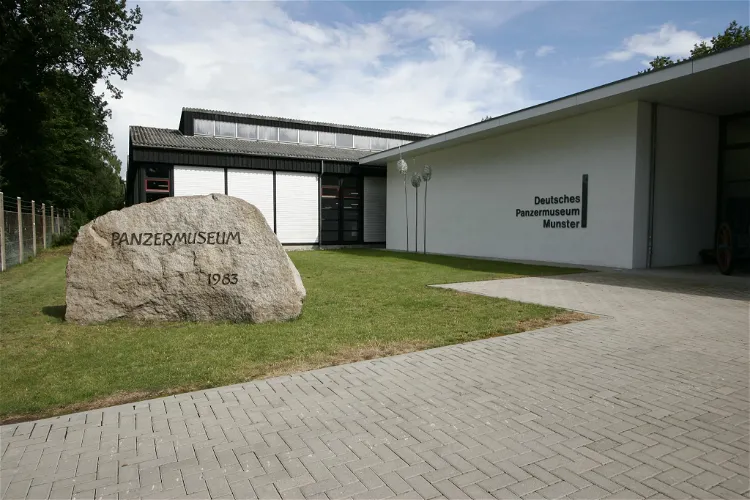
German Tank Museum
MunsterThe German Tank Museum, also known as Deutsches Panzermuseum Munster, is situated in Munster, Germany. It is an armoured fighting vehicle museum that is located within the Munster Training Area camp. This museum is a significant destination for those interested in military history and armoured vehicles.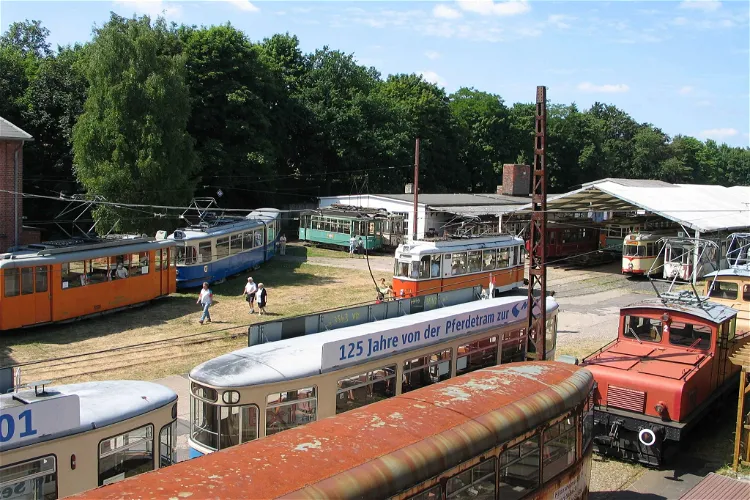
Hanover Tramway Museum
SehndeThe Hannoversche Straßenbahn-Museum (HSM) is a museum dedicated to trams and related vehicles. It is located in Wehmingen, a district in Sehnde, southeast of Hannover. The museum is privately run and operates on a voluntary basis.
Aviation Museum Hannover-Laatzen
LaatzenThe Aviation Museum Laatzen-Hannover is a permanent exhibition located in Laatzen, dedicated to the history of aviation. It provides an in-depth look into the evolution of aviation, from its early beginnings to the present day. The museum is a great place for aviation enthusiasts and history buffs alike, offering a unique opportunity to learn about the technological advancements and historical events that have shaped the world of aviation.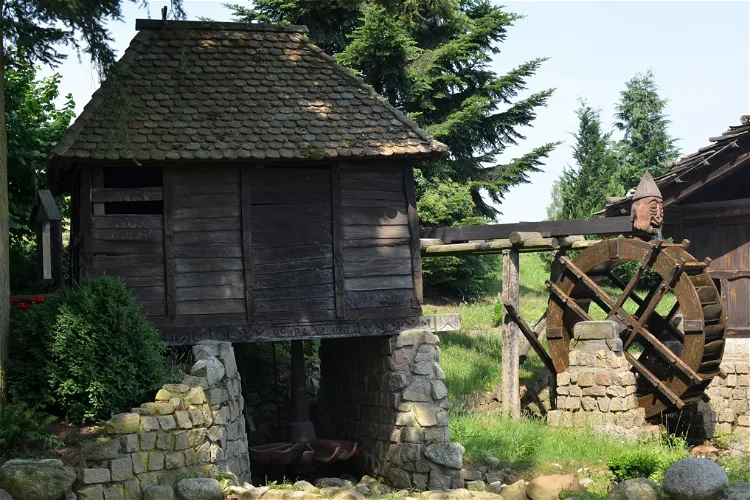
International Museum Gifhorn
GifhornThe International Windmill and Watermill Museum in Gifhorn, Lower Saxony, Germany is an open-air museum that offers a unique experience for visitors. It houses 15 buildings, either original or exact replicas of mills from 12 different countries. Each mill's surroundings are designed to reflect the topography typical of its country of origin. This provides a unique opportunity for visitors to experience a variety of cultures and historical periods in one location.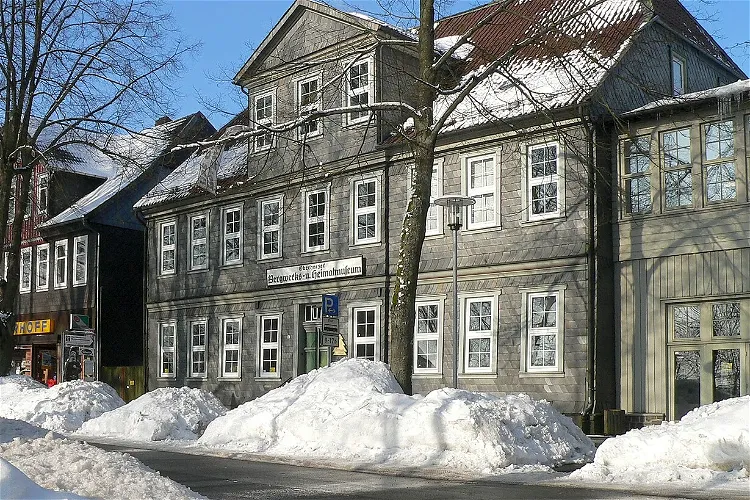
Upper Harz Mining Museum
Clausthal-ZellerfeldThe Upper Harz Mining Museum, located in Clausthal-Zellerfeld in the Harz mountains of central Germany, is a museum dedicated to technological and cultural history. It provides a comprehensive insight into the history and presentation of mining in the Upper Harz region up to the 19th century.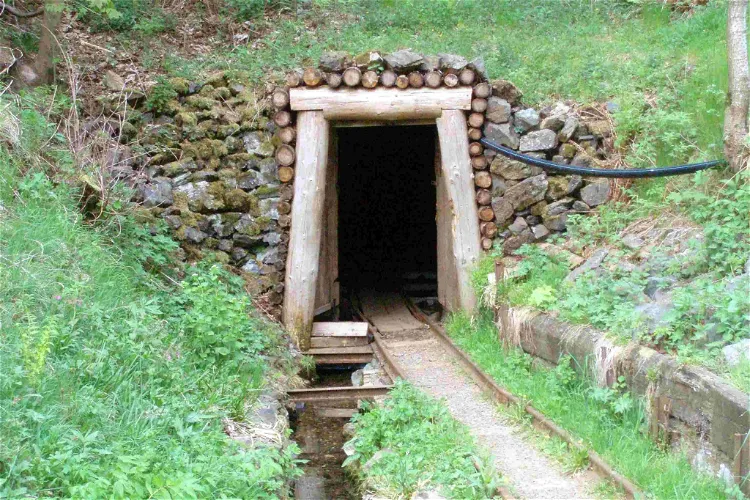
Roter Bär Pit
BraunlageThe Roter Bär Pit, located in Sankt Andreasberg in the Upper Harz, is a historical iron ore mine that was in operation from around 1800 to the 1860s. Today, it is managed as a visitor mine by the Sankt Andreasberg Association for History and Antiquities, and is known as the Lehrbergwerk Grube Roter Bär. Visitors can explore the mine and learn about its history and the mining processes that took place there.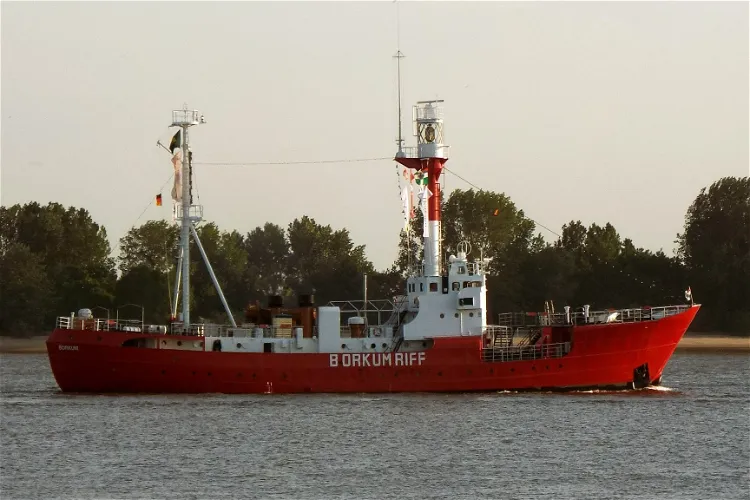
Förderverein Feuerschiff Borkumriff
BorkumThe Borkumriff was a fire ship position from 1875 to 1988. It was originally located at 53° 51′ 0″ N, 6° 26′ 0″ O, but was later moved to position 53° 43′ 0″ N, 6° 23′ 0″ O due to changes in shipping routes. From 1970, it was located at 53° 48′ 0″ N, 6° 22′ 0″ O. The position was about 30 kilometers northwest of the island of Borkum, in one of the main shipping routes of the German Bight.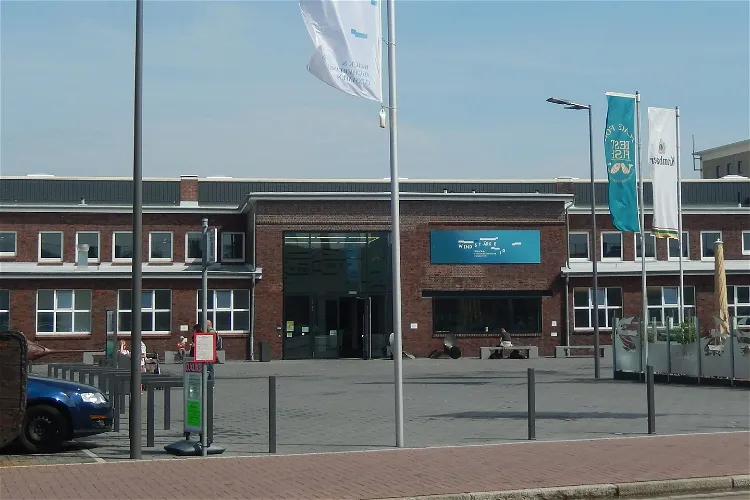
Windstärke 10
CuxhavenThe Windstärke 10 – Wrack- und Fischereimuseum Cuxhaven is a museum located in Cuxhaven. It is housed in two former fish processing halls and a new building connecting these two halls, covering a total area of approximately 4000 m². The museum showcases the challenges and dangers of seafaring, particularly a part of the collections of the former Wrackmuseum and an overview of 100 years of fishing history.
Nordwolle Museum
DelmenhorstThe Nordwolle museum, officially known as the Nordwestdeutsche Museum für IndustrieKultur, is a significant historical site located in Delmenhorst. The museum is housed in the engine house of the former Norddeutsche Wollkämmerei & Kammgarnspinnerei, a once dominant company that processed wool and worsted. The building and the factory housing are listed as a Denkmalschutz, a protected monument in Germany, adding to the historical significance of the site.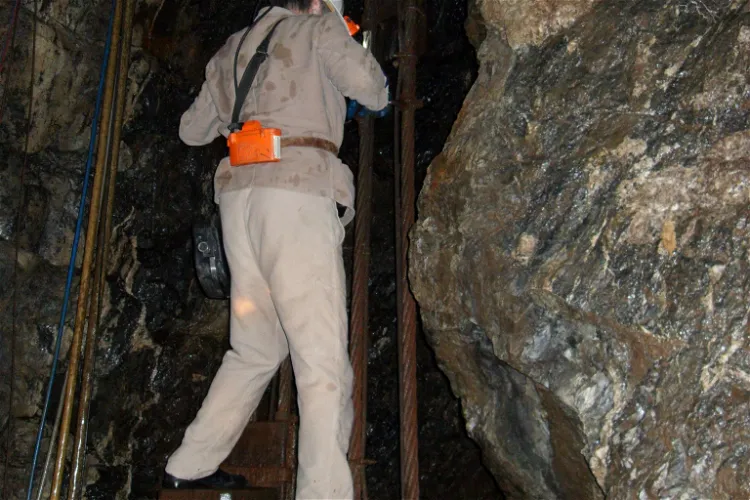
Samson Pit
BraunlageThe Samson Pit, located in Sankt Andreasberg in the Upper Harz region of central Germany, is an historic silver mine. This site offers a unique glimpse into the history of mining in the region, with its rich silver deposits and long-standing mining operations.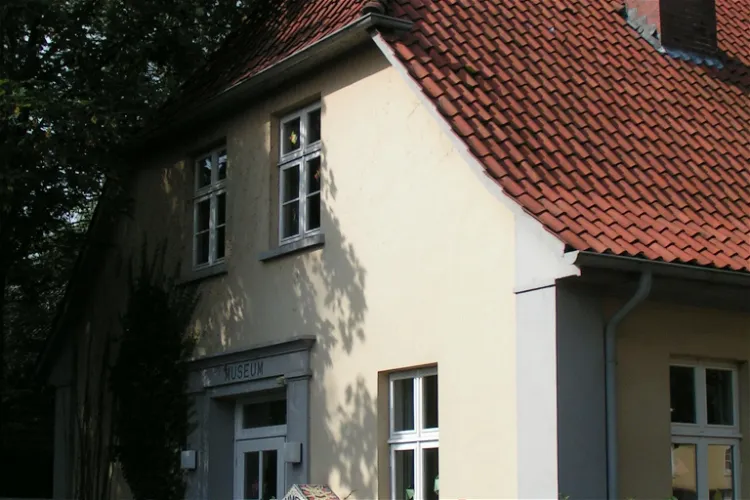
Industriemuseum Lohne
LohneThe Industriemuseum Lohne, established in 1987, is dedicated to the history of the industrialization of the city of Lohne, located in the Lower Saxony district of Vechta. This museum provides a deep dive into the industrial past of the city, offering a unique perspective on its development and growth.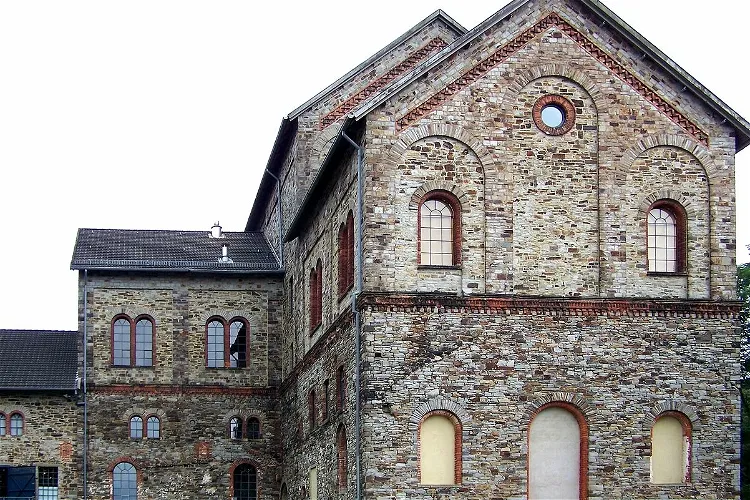
Museum Industriekultur Osnabrück
OsnabrückThe Museum Industriekultur (MIK) is a museum situated in the city of Osnabrück in Lower Saxony. It offers an overview of the coal mining that took place at Piesberg. The museum is located at Piesberg, where coal was mined until 1898 and again to a lesser extent after the Second World War. The Piesberg was one of the largest sandstone quarries in Europe; sandstone is still being mined on its flanks today.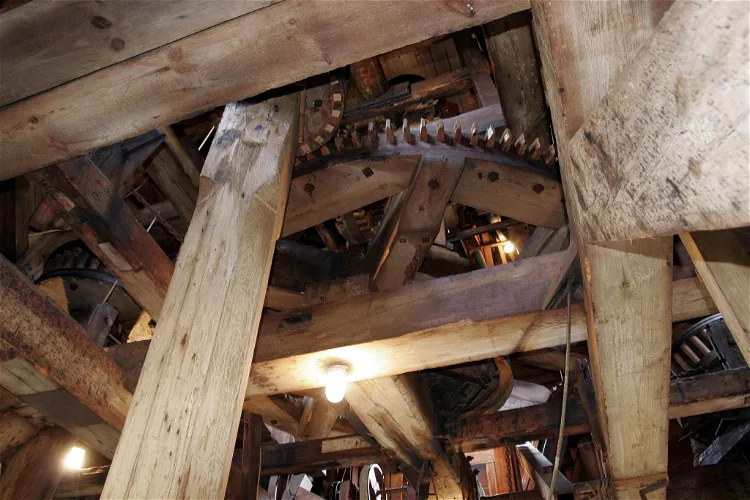
Vareler Windmühle
VarelThe Vareler Windmühle, colloquially known as the "Grode Möhl", is a gallery Dutch windmill situated in the city of Varel, in the Friesland district of Lower Saxony. It holds the distinction of being the second largest preserved windmill in Germany, making it a significant landmark in the region.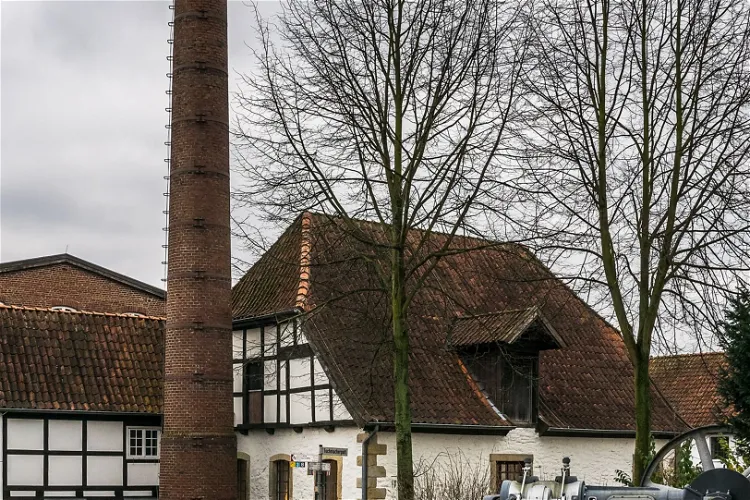
Tuchmacher Museum Bramsche
BramscheThe Tuchmacher Museum Bramsche, opened in 1997, is housed in the buildings of the Bramscher Tuchmacher Guild. This guild, which was dedicated to the production of woolen cloths, ceased its operations in 1972. The museum's location adds a historical touch to the visitor's experience, as it is situated in the very place where the guild used to operate.
AutoMuseum Volkswagen
WolfsburgThe AutoMuseum Volkswagen is an independent museum located in Wolfsburg, Lower Saxony. It is supported by Volkswagen AG, one of the world's leading automobile manufacturers. The museum is dedicated to showcasing the history and evolution of Volkswagen vehicles, making it a fascinating destination for car enthusiasts and history buffs alike.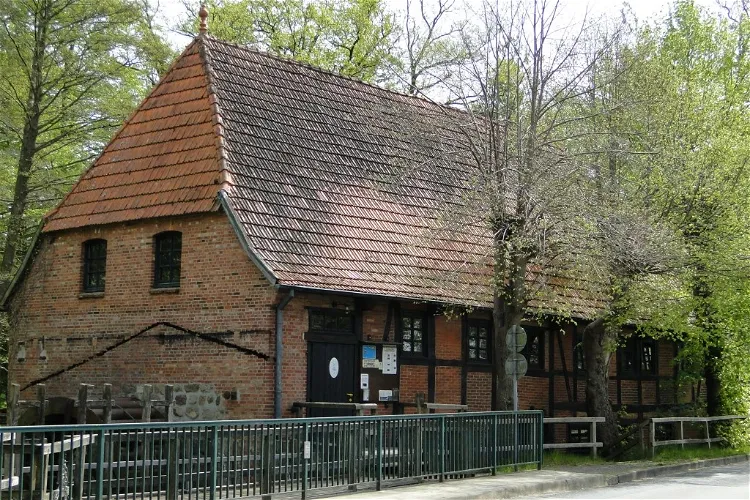
Holmer Mühle
Buchholz in der NordheideThe Holmer Mühle is a protected watermill situated on the Lower Saxony Mill Road (No. 111). This historic mill is a part of the Holm estate, which is privately owned. The mill's location, directly on the Seeve river, adds to its charm and historical significance.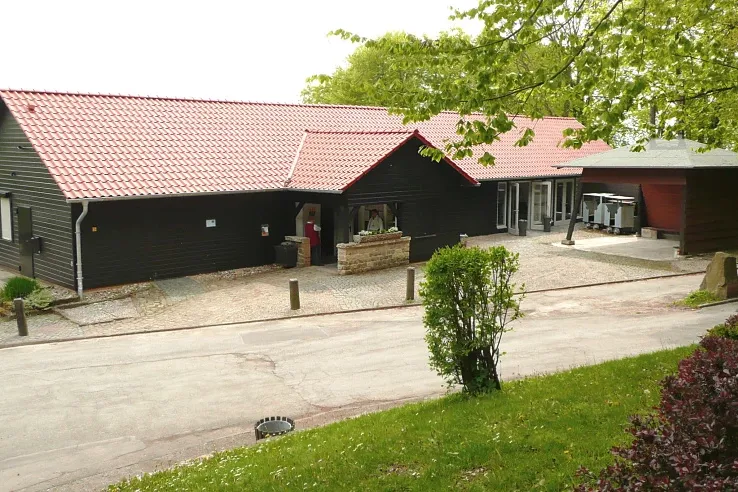
Der Hüttenstollen Besucherbergwerk und Museum Osterwald
SalzhemmendorfThe Hüttenstollen Osterwald, located in Osterwald, was a mine in the eastern Osterwald coal district. It was opened in 1842 and has a rich history of coal mining. Today, it serves as a visitor mine and is a protected cultural monument.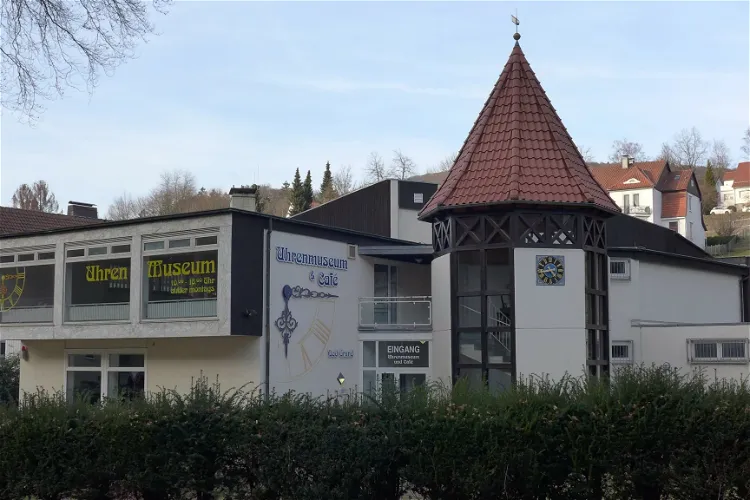
Uhrenmuseum
Bad GrundThe Uhrenmuseum Bad Grund showcases a wide variety of clocks from different countries, each with their unique designs and purposes. The museum documents the evolution of clock technology from the Renaissance period to the present day, providing a comprehensive overview of the history of timekeeping.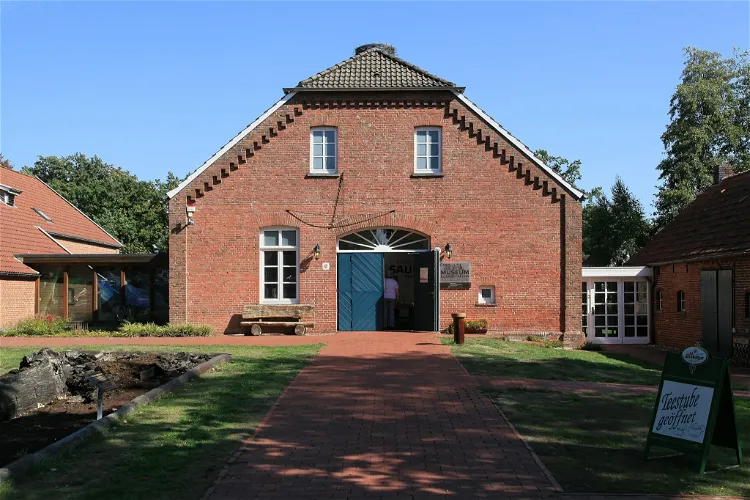
Moor- und Fehnmuseum Elisabethfehn
ElisabethfehnThe Moor- und Fehnmuseum Elisabethfehn is a peat museum situated in the Fehnkolonie Elisabethfehn, within the municipality of Barßel. The museum is conveniently located directly on the Elisabethfehn canal, making it easily accessible for visitors.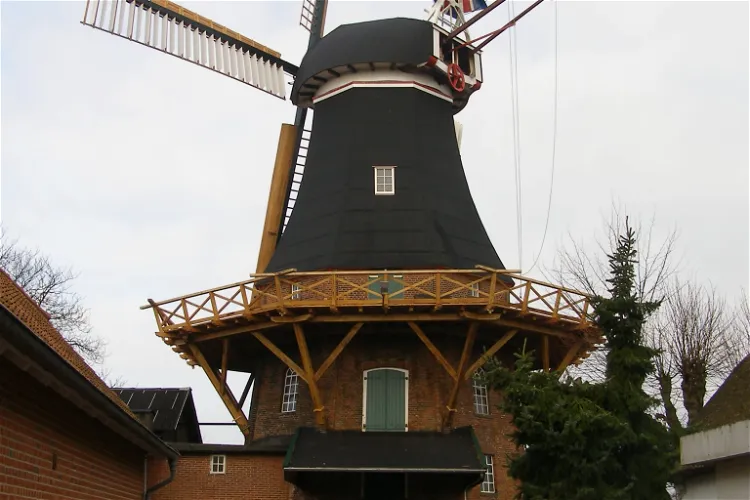
Museum Moorseer Mühle
NordenhamThe Moorseer Mill, located in Nordenham Abbehausen, holds the distinction of being the last fully functional gallery Dutchman in the Wesermarsch district in Lower Saxony. This makes it a unique site for visitors interested in historical architecture and the history of milling in the region.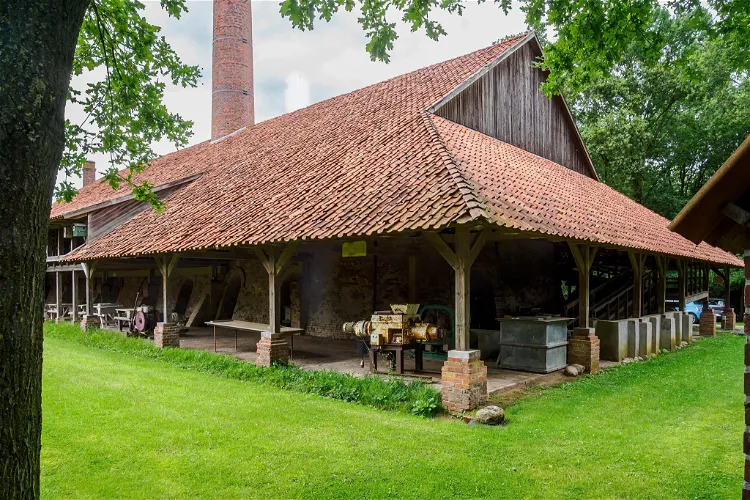
Ziegeleimuseum Westerholt
WardenburgZiegelei Westerholt, located in the Wardenburg district, was once a thriving brickyard. Today, it serves as an industrial museum, offering a unique insight into the history and process of brick making. Visitors can explore the facility and learn about its transformation from a working brickyard to a museum.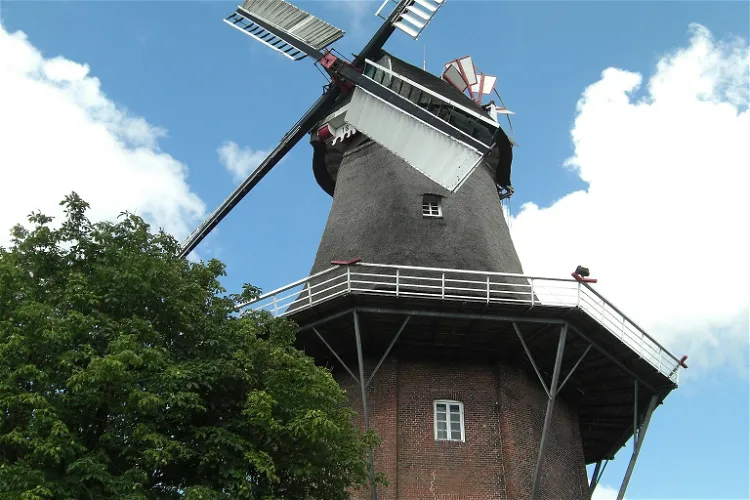
Mühlenfachmuseum Stiftsmühle Aurich
Landkreis AurichThe Stiftsmühle in Aurich, Lower Saxony, is a five-story Dutch windmill that was built in 1858. It is one of the city's landmarks and the second tallest mill in East Frisia with a total height of 29.95 meters. The mill is still operational today, making it a unique piece of living history. The mill got its name from the Sethestift, which acquired the mill in 1932.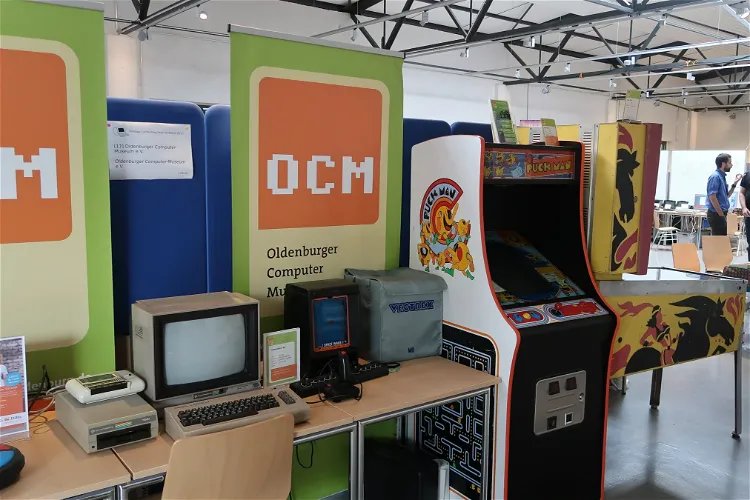
Oldenburger Computer-Museum
OldenburgThe Oldenburg Computer Museum, founded in 2008, is located in Oldenburg, Lower-Saxony, Germany. The museum is dedicated to preserving and presenting the history of home computing in an operational manner. This means that the exhibits are not just for viewing, but also for interaction, providing a unique experience for visitors.
Stadtmuseum Nordhorn
NordhornThe Stadtmuseum Nordhorn is a museum that focuses on the city and textile history of the border town of Nordhorn in Lower Saxony. It is located in three historical buildings that were once part of Nordhorn's textile production industry. These buildings are the NINO high-rise, the Povelturm, and the Alte Weberei Povel.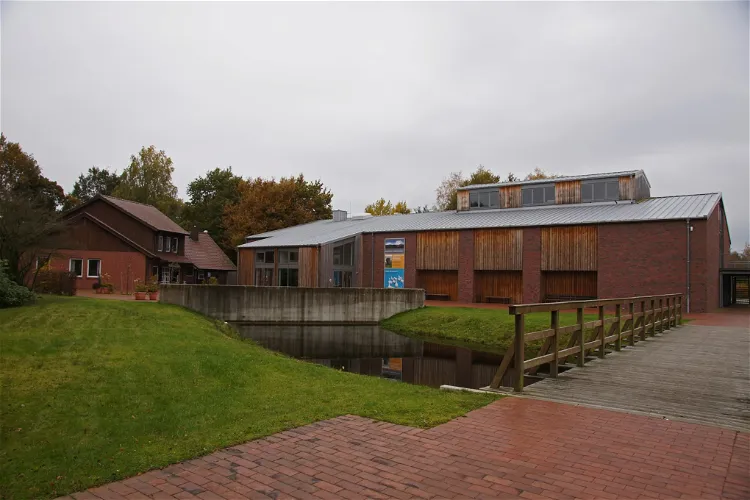
Emsland Moormuseum
Heseper TorfwerkThe Emsland Moormuseum, located in Gro Hesepe, Geeste municipality in the Lower Saxony district of Emsland, is recognized as the largest moor museum in Europe. It offers a comprehensive insight into the history and significance of moors in the region, making it a unique destination for those interested in natural history and environmental conservation.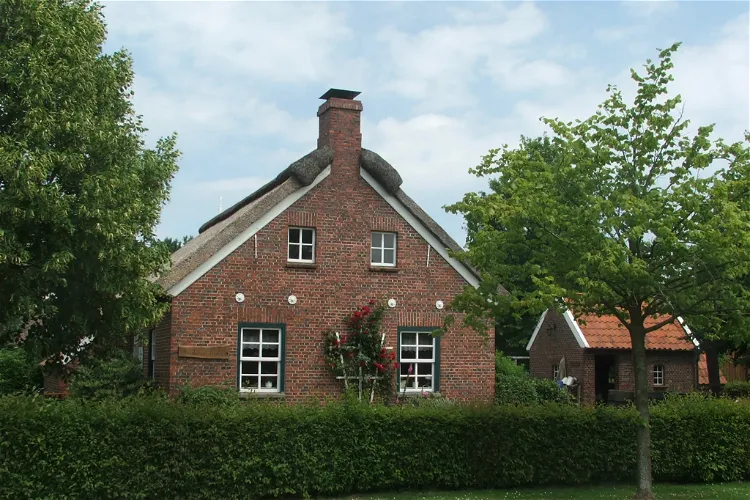
Peat and Settlement Museum
WiesmoorThe Peat and Settlement Museum is composed of several original, reconstructed buildings. These include a historical village school, a forge, and a settler's house that reflects the time around 1900. The reconstruction of this settler's house in 1988 marked the founding of the museum. These buildings provide a tangible connection to the past, allowing visitors to step back in time and experience the living conditions of the early settlers.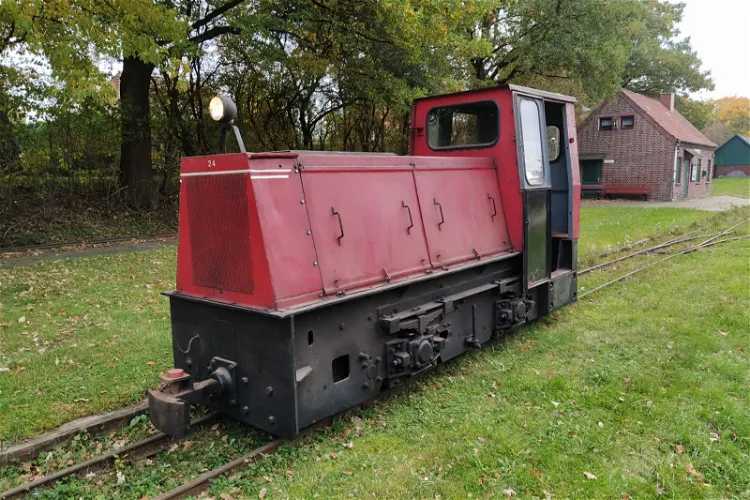
Deutsches Feld- und Kleinbahnmuseum e.V
DeinsteThe Deutsches Feld- und Kleinbahnmuseum (DFKM) is a museum dedicated to the history of field railways. It is situated in the municipality of Deinste, in the Stade district of Lower Saxony. This location offers a unique insight into the history and development of field railways, making it an interesting destination for railway enthusiasts and history buffs alike.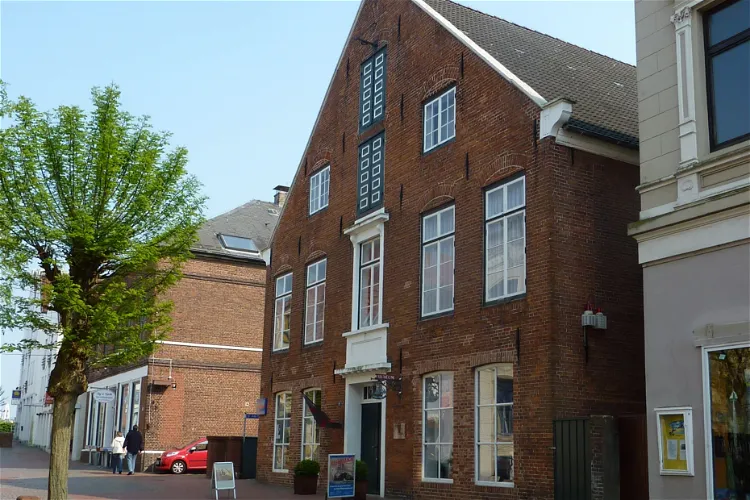
Schifffahrtsmuseum der oldenburgischen Unterweser - Haus Elsfleth
ElsflethThe Schifffahrtsmuseum der oldenburgischen Unterweser, also known as the Schifffahrtsmuseum Brake, is a museum that focuses on the history of Oldenburg shipping. It is situated in Brake and has an additional branch located in the former Villa Steenken in Elsfleth. The museum offers a deep dive into the maritime history of the 19th and early 20th centuries in the Grand Duchy and later Free State of Oldenburg.
Landtechnik Museum Gut Steinhof
BrunswickGut Steinhof is a historical manor farm situated in the northern part of Brunswick, specifically in the district of Lehndorf-Watenbüttel. It is conveniently located on Federal Highway 214, making it easily accessible for tourists.
Phaeno Science Center
WolfsburgThe Phæno Science Center, located in Wolfsburg, Germany, is an interactive science center that was completed in 2005. It offers a unique opportunity for visitors to engage with science in a hands-on and interactive way. The center is designed to be accessible and engaging for all ages, making it a great destination for families, school groups, or anyone with a curiosity about the world around them.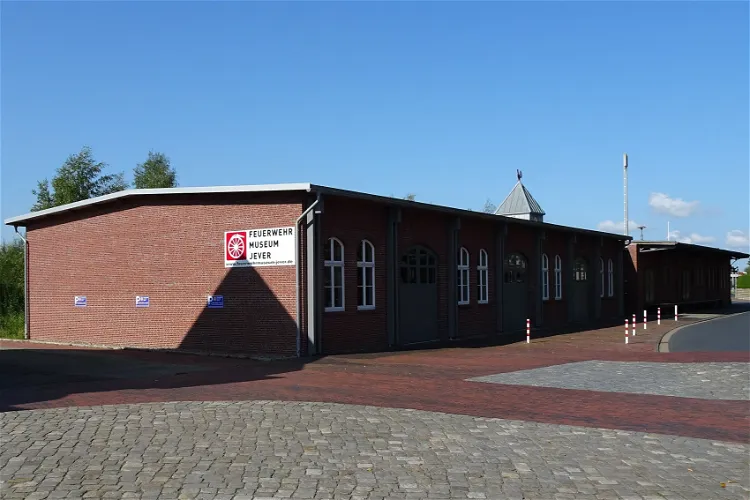
Feuerwehrmuseum Jever
JeverThe Feuerwehrmuseum Jever, located in Jever, is a museum that is dedicated to the history of firefighting and the fire brigade. It provides an in-depth look into the evolution of firefighting techniques and equipment, making it an interesting destination for those interested in history and firefighting.
Heimatmuseum Leer
Landkreis LeerThe Heimatmuseum Leer is a museum that provides insights into the lifestyle and work culture of Leer, as well as the city's history. It offers a unique opportunity to understand the evolution of the city and its people over time. The museum's exhibits cover various aspects of life in Leer, from its early settlement to its modern development.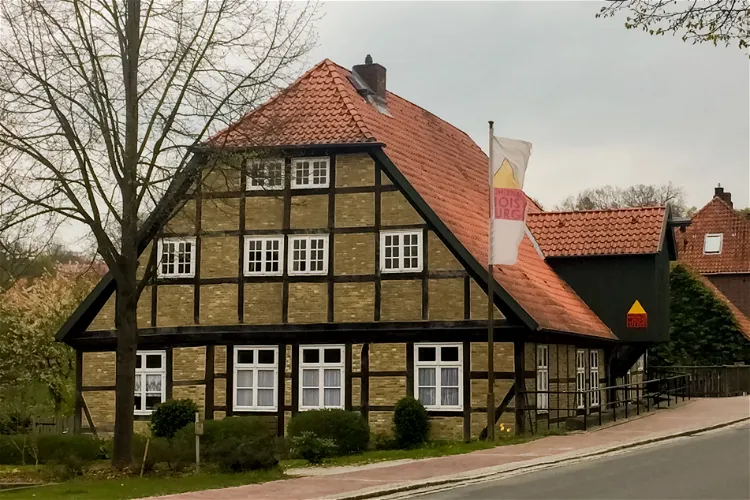
Mühlenmuseum Moisburg
MoisburgThe Mühlenmuseum Moisburg, located in the former Amtswassermühle in Moisburg in the Harburg district since 1985, offers visitors a chance to explore the regional mill history through its permanent and special exhibitions. This museum provides a unique opportunity to delve into the past and understand the significance of mills in the region's history.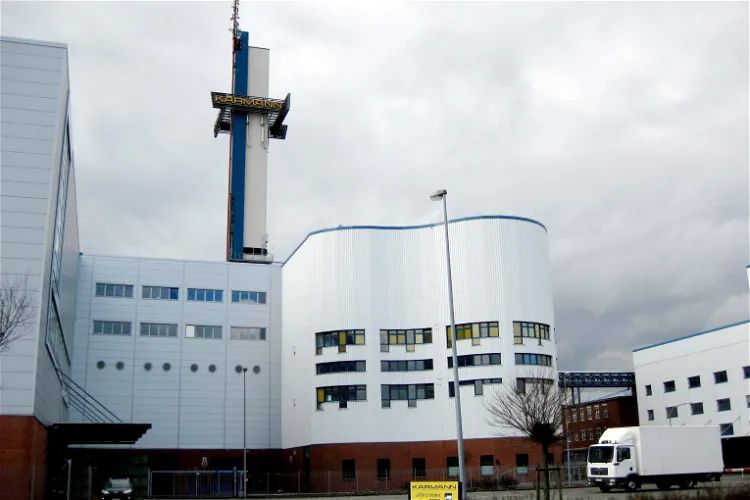
Automobilsammlung
OsnabrückThe Volkswagen Osnabrück GmbH is a specialized subsidiary of the Volkswagen AG, focusing on automobile development and production. It is based in the city of Osnabrück, located in the Lower Saxony region of Germany. This location is known for its competence in convertible and small series production, with vehicles being fully assembled on-site, from design to final assembly.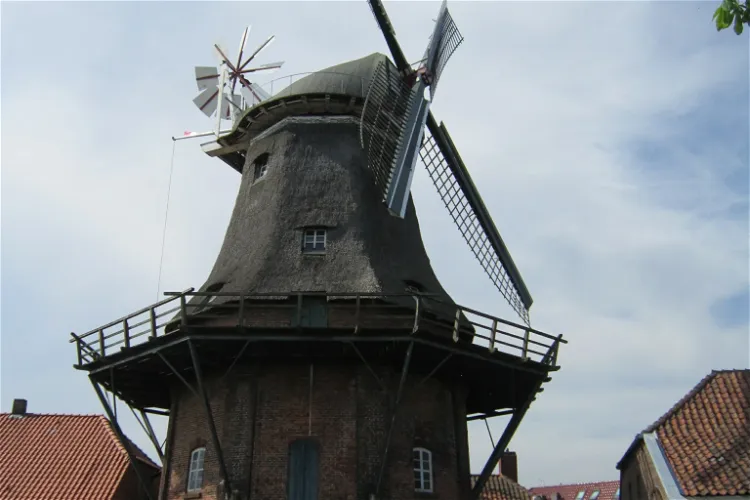
Landwirtschaftsmuseum
JeverThe Schlachtmühle is a significant historical landmark in the Frisian county town of Jever. Constructed in 1847, this gallery Dutch windmill is part of the Frisian Mill Road, a route that connects various windmills in the region. Its central location in Jever, near the old port of the city, makes it easily accessible for tourists.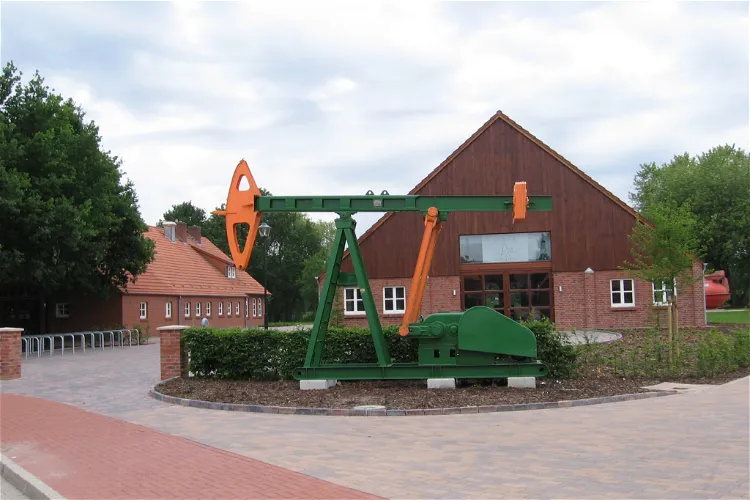
Erdöl-Erdgas-Museum Twist
Twist-SiedlungThe Erdöl-Erdgas-Museum Twist, located in Twist, Germany, is a unique museum dedicated to the exploration and understanding of crude oil and natural gas. The museum showcases technical equipment used in the exploration of these natural energy resources and provides detailed information about their geological origin. This museum offers a unique opportunity for visitors to learn about the history and science behind these important energy resources.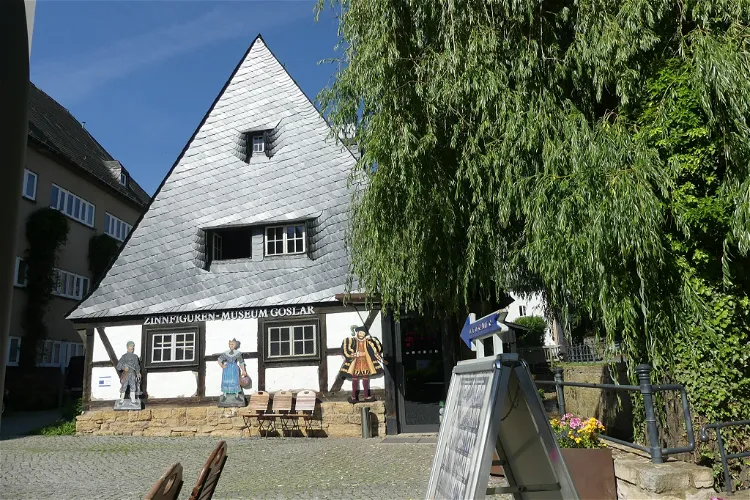
Tin Figure Museum
GoslarThe Tin Figure Museum in Goslar is a unique attraction that showcases both historical and modern tin figures. These figures are displayed in self-created dioramas, providing a visual representation of various historical periods and events. The museum's collection is diverse, offering a glimpse into different eras and cultures.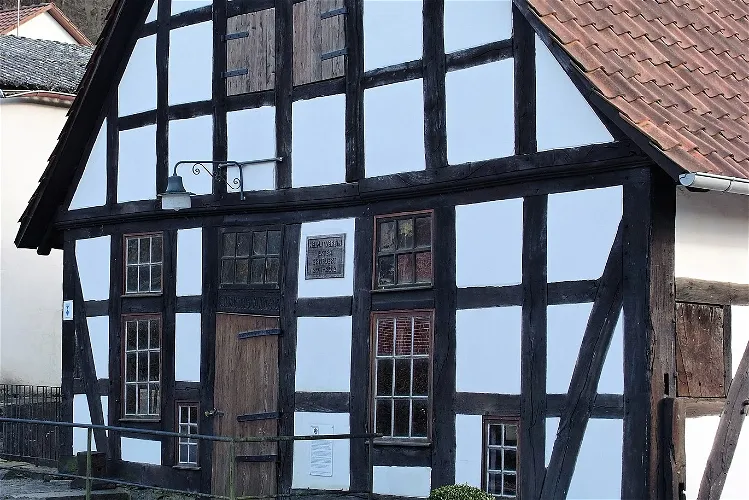
Industriemuseum Oberer Eisenhammer
RintelnThe Oberer Eisenhammer, located in the district of Exten in the city of Rinteln, is a former iron hammer mill that is now protected as an industrial monument. This historical site was founded around the year 1745, making it a significant part of the region's industrial history.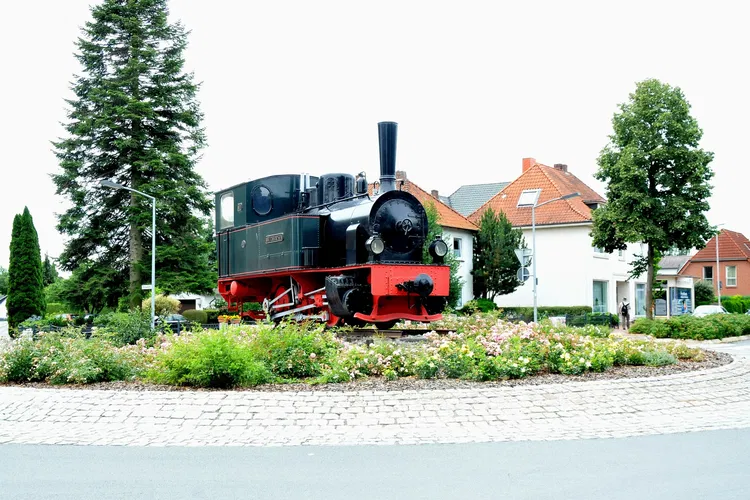
Deutscher Eisenbahn-Verein
Bruchhausen-VilsenThe Deutscher Eisenbahn-Verein e. V. (DEV) is a club based in Bruchhausen-Vilsen. Its primary goal is to preserve a small railway with all its facilities as a living open-air museum. This initiative provides a unique opportunity for visitors to experience the historical railway system in its original form.
Museum für Landtechnik und Landarbeit
BörryThe Museum für Landtechnik und Landarbeit, located in Börry in the municipality of Emmerthal in Lower Saxony, is an open-air museum that offers a unique glimpse into the past. It showcases historical agricultural machinery and former farming tools from the Hameln-Pyrmont district. This museum provides a fascinating insight into the evolution of farming and agricultural practices over the years.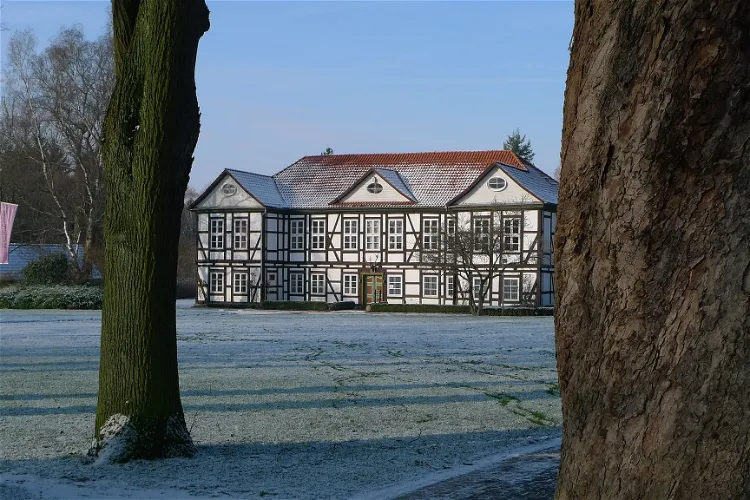
Städtisches Museum Seesen
SeesenThe Städtisches Museum Seesen is a municipal museum situated in the Lower Saxon town of Seesen. It is a significant cultural institution in the region, offering a wide range of exhibits that provide insights into the history and culture of the area.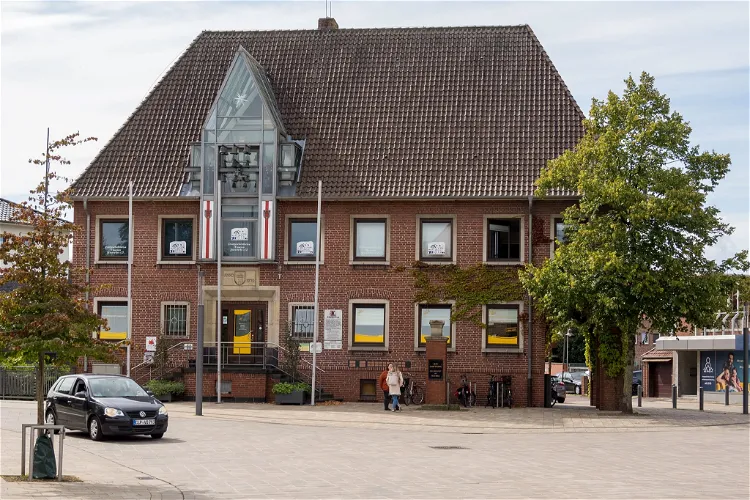
Postgeschichtliches Museum
FriesoytheOriginally, the Postgeschichtliche Museum was housed in a 16 m² area on the upper floor of Friesoythe's former post office. However, since 2004, the museum has been located in the former town hall “Stadtmitte”, boasting a larger exhibition area of 300 m².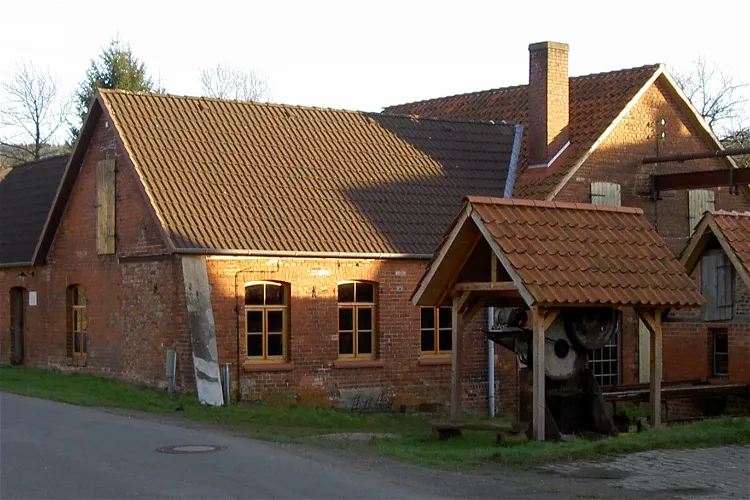
Industriemuseum Unterer Eisenhammer
RintelnThe Unterer Eisenhammer is a significant historical site located in the Exten district of the city of Rinteln. This former iron hammer mill has been recognized as a protected architectural and industrial monument since 2006, marking its importance in the region's industrial history.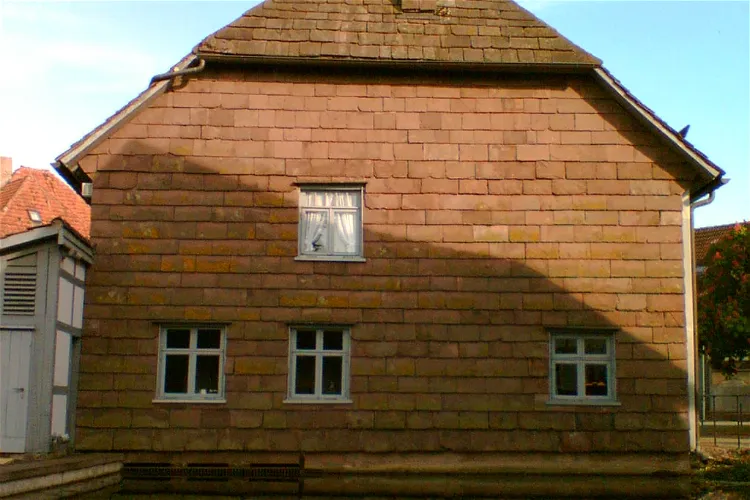
Blankschmiede Neimke
DasselThe Blankschmiede Neimke in Dassel is a unique museum that combines technology and agriculture. It houses a water-powered hammer forge, providing visitors with a glimpse into the past. This museum is a cultural monument and offers an interesting insight into the historical techniques of forging.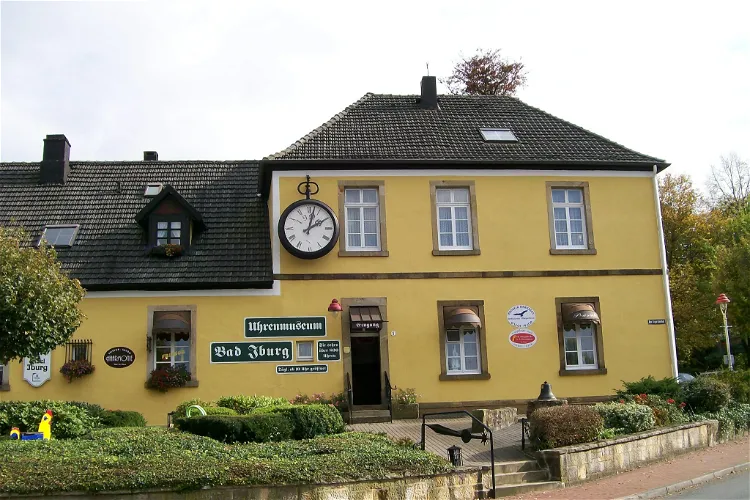
Uhrenmuseum Bad Iburg
Bad IburgThe Uhrenmuseum in Bad Iburg, Lower Saxony, is a private institution that was established in 1976. It houses a collection of approximately 800 functional timepieces, making it a unique destination for those interested in the history and evolution of timekeeping devices.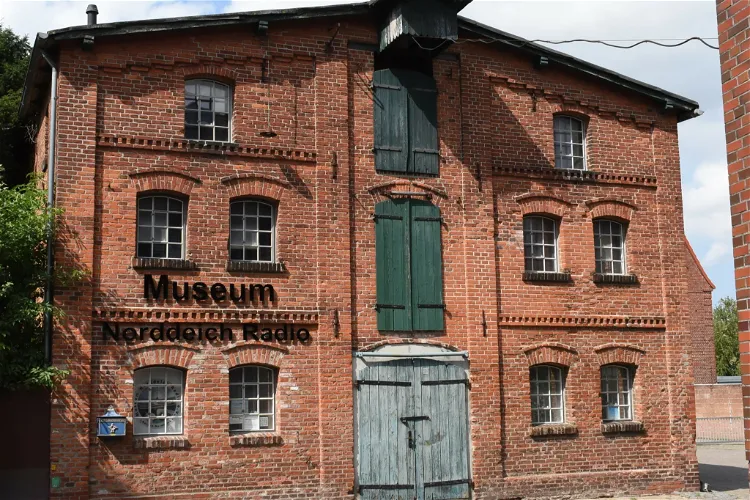
Norddeich Radio
NordenNorddeich Radio, also known by its former call signs KND, KAV, DAF, was a coastal radio station that facilitated international communication with German ships. Established in 1907, the station was located in Norddeich, North Germany, and played a significant role in maritime communication for nearly a century.
Museumseisenbahn Küstenbahn Ostfriesland
NordenThe Museumseisenbahn Küstenbahn Ostfriesland e. V. (MKO) is a society based in Norden, Germany. Its primary objective is to preserve and maintain the operational status of the historic coastal railway stretch between the former district town of Norden and the municipality of Dornum. This railway line once formed part of the continuous connection between Emden and Jever along the East Frisian North Sea coast.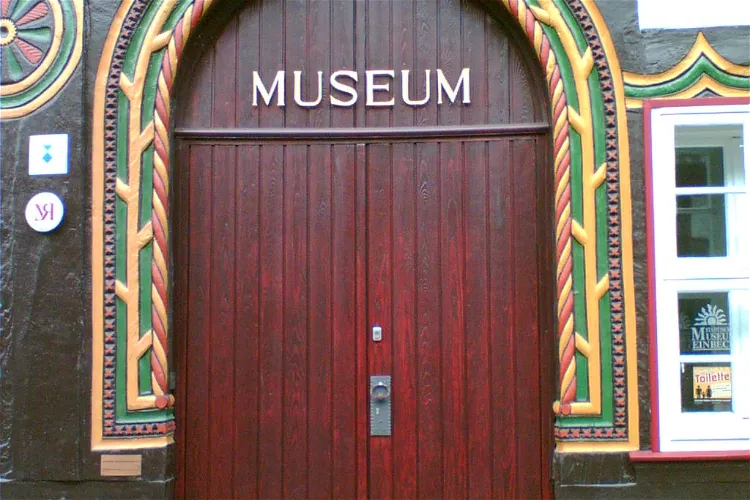
StadtMuseum Einbeck
EinbeckThe StadtMuseum Einbeck, previously known as the Städtisches Museum Einbeck, is a significant cultural institution in the Lower Saxony city of Einbeck. The museum's primary focus is on the history of Einbeck and the history of the bicycle, offering visitors a unique insight into these two intertwined narratives.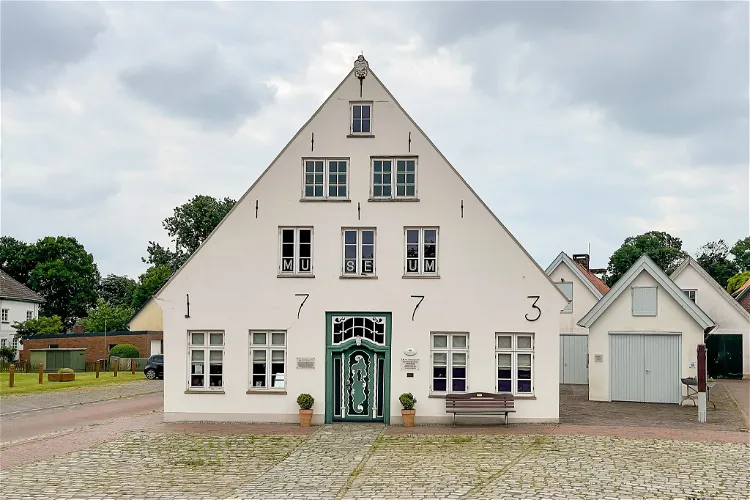
Handwerksmuseum Ovelgönne
OvelgönneThe Handwerksmuseum Ovelgönne is a museum located in the municipality of Ovelgönne in Lower Saxony, Germany. It is dedicated to the history of craftsmanship, preserving and documenting evidence of local and regional craft history. The museum's collection includes tools from workshops or business establishments, from textile, wood, metal, and leather processing crafts, or devices from the rural working world, as well as everyday cultural objects.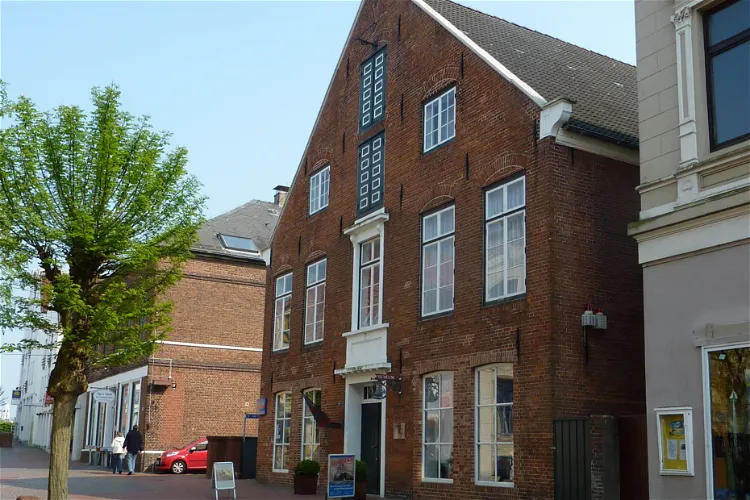
Schiffahrtsmuseum Unterweser
BrakeThe Schiffahrtsmuseum Unterweser, also known as the Schiffahrtsmuseum Brake, is a museum that focuses on the history of Oldenburg shipping. Located in Brake, the museum also has an external branch in the former Villa Steenken in Elsfleth. The museum's exhibitions primarily focus on the maritime history of the 19th and early 20th centuries in the Grand Duchy and later Free State of Oldenburg.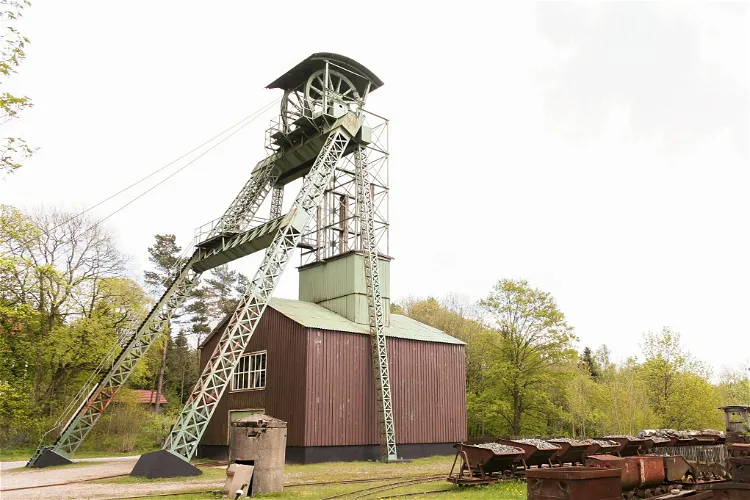
Ottiliaeschacht
Clausthal-ZellerfeldThe Ottiliae Shaft is recognized as part of the World Heritage Route of the UNESCO World Heritage in the Harz. This recognition underscores the historical and cultural significance of the site, making it a noteworthy destination for those interested in history and heritage.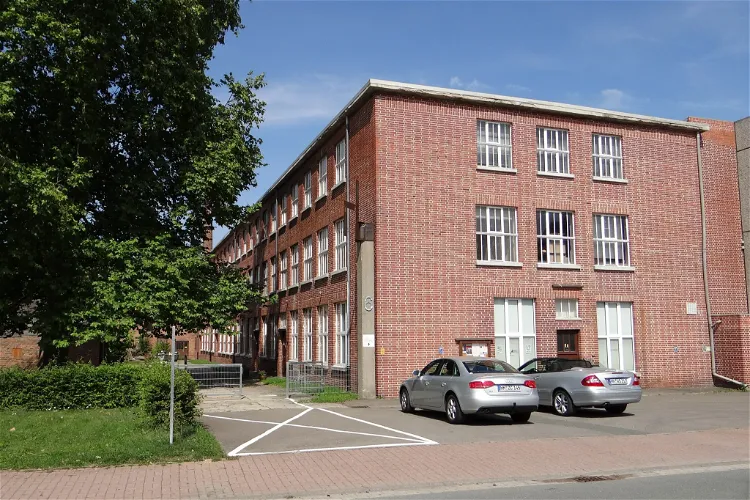
Deutsches Stuhlmuseum Eimbeckhausen
Bad Münder am DeisterThe Deutsches Stuhlmuseum Eimbeckhausen is located in Eimbeckhausen, a district of the Lower Saxony city of Bad Münder am Deister in the Hameln-Pyrmont district. The museum is dedicated to the seat furniture chair, providing a unique focus on this everyday object.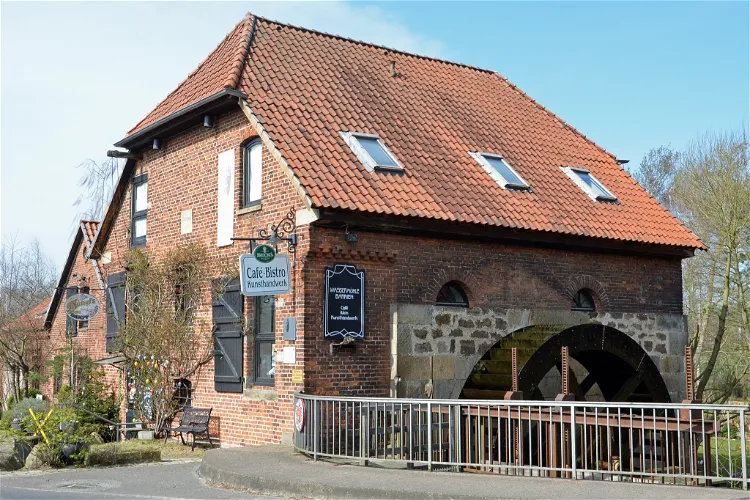
Wassermühle Barrien
SykeThe Wassermühle Barrien, also known as Barrier Wassermühle, is a private watermill located in the district of Barrien in Syke, at An der Wassermühle 4b. This historic mill dates back to the 19th century, offering visitors a glimpse into the past.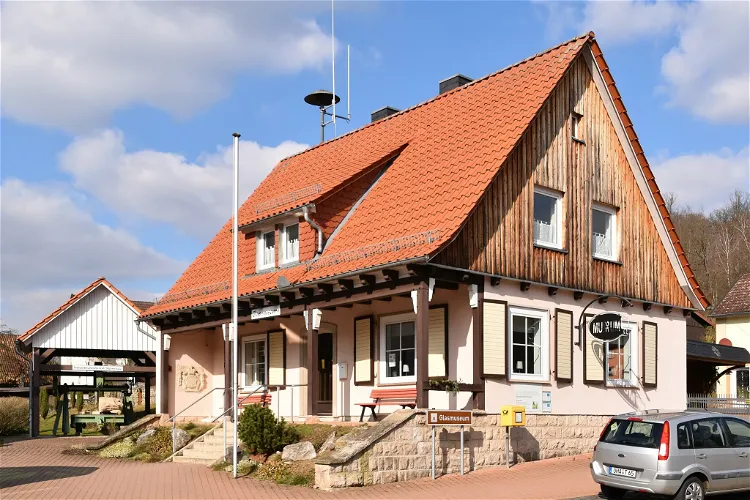
Glasmuseum Steina
Bad SachsaThe Glasmuseum Steina is situated in the former municipal house of Steina, a district of Bad Sachsa in the Göttingen district in the southern Harz. This location is steeped in history and provides a unique setting for the museum. Visitors can appreciate the historical significance of the building and its surroundings while exploring the museum's exhibits.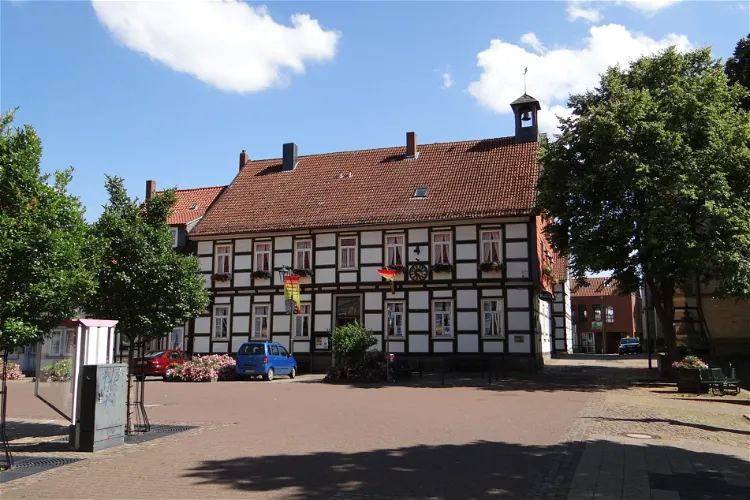
Turmuhrenmuseum
BockenemThe Turmuhrenmuseum Bockenem is a unique clock museum situated in the Lower Saxon city of Bockenem, within the district of Hildesheim. This museum offers a unique opportunity to explore the history and craftsmanship of clock making.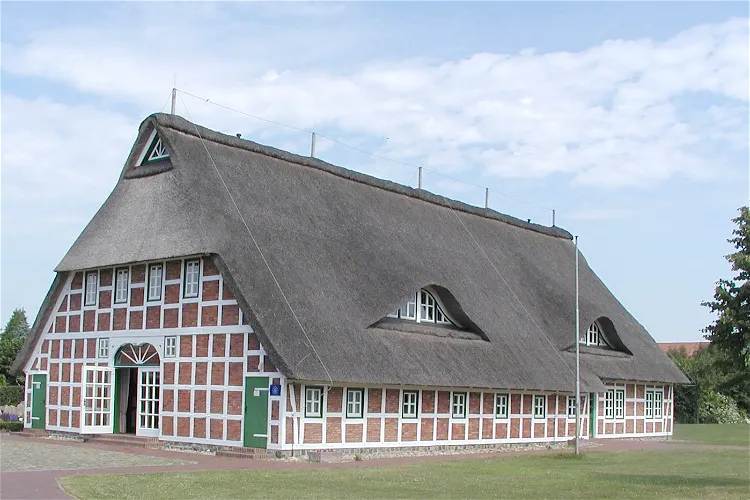
Norddeutsches Radiomuseum
NindorfThe Norddeutsches Radiomuseum is situated in the attic of the Bördehuus Loomst, nestled within the scenic landscape park of Lamstedt, in the Cuxhaven district of Lower Saxony. This location provides a unique setting for the museum, offering visitors a chance to explore the rich history of radio while surrounded by the natural beauty of the park.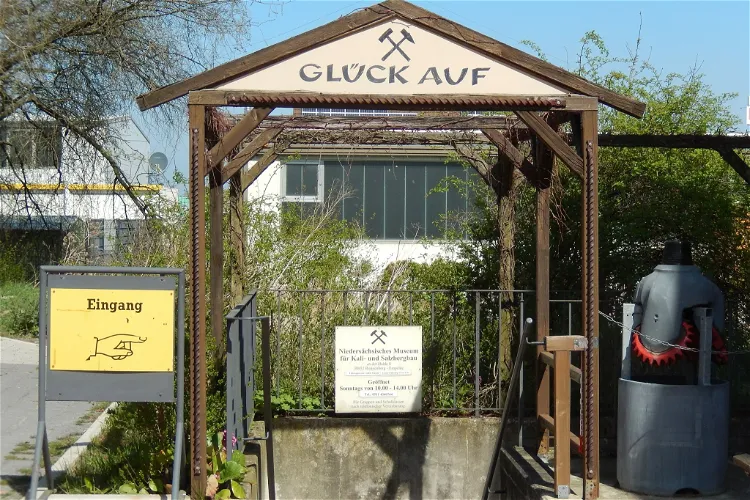
Niedersächsisches Museum für Kali- und Salzbergbau
RonnenbergThe Niedersächsische Museum für Kali- und Salzbergbau is situated in the Empelde district of the city of Ronnenberg, in the Hannover region. This location is easily accessible and offers a unique insight into the history and processes of potash and salt mining in the region.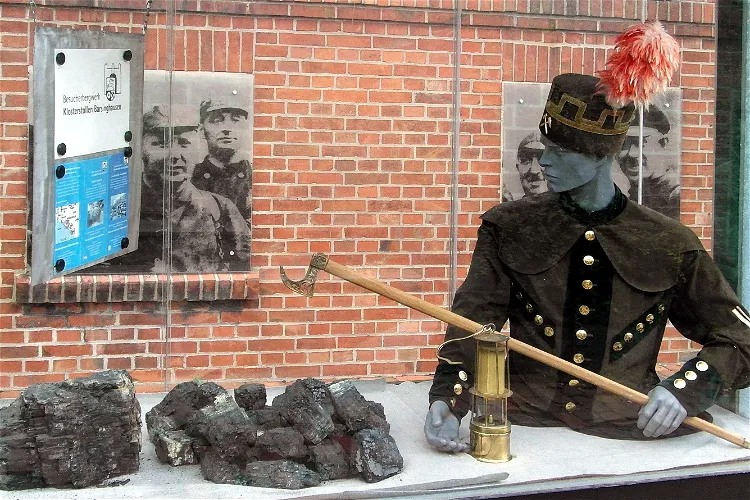
Klosterstollen Barsinghausen
BarsinghausenThe Klosterstollen Barsinghausen, officially referred to as Besucherbergwerk Klosterstollen, is a visitor mine located in the city of Barsinghausen in the Hanover region. It was inaugurated in May 1999 and showcases a part of the decommissioned Barsinghausen coal mine.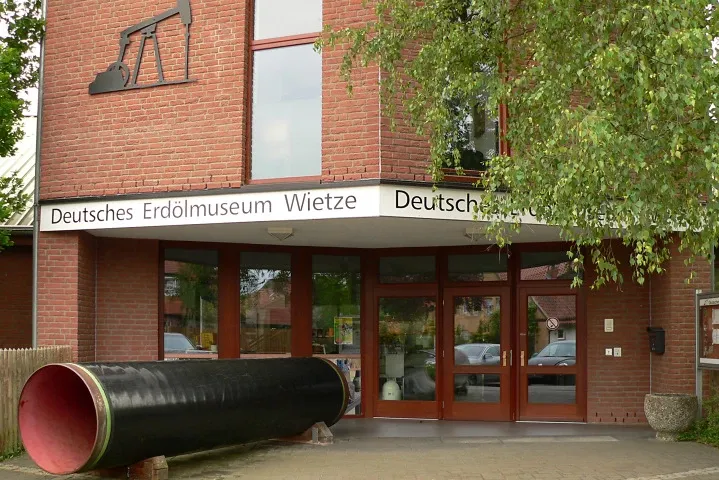
German Oil Museum
HornbostelThe German Oil Museum Wietze, situated in the municipality of Wietze, west of Celle in the district of Celle (Lower Saxony), is a significant site for those interested in the history and development of the oil industry. Established on part of the former Wietze oil field, the museum was opened in 1970 and offers a unique insight into the evolution of the oil industry in Germany.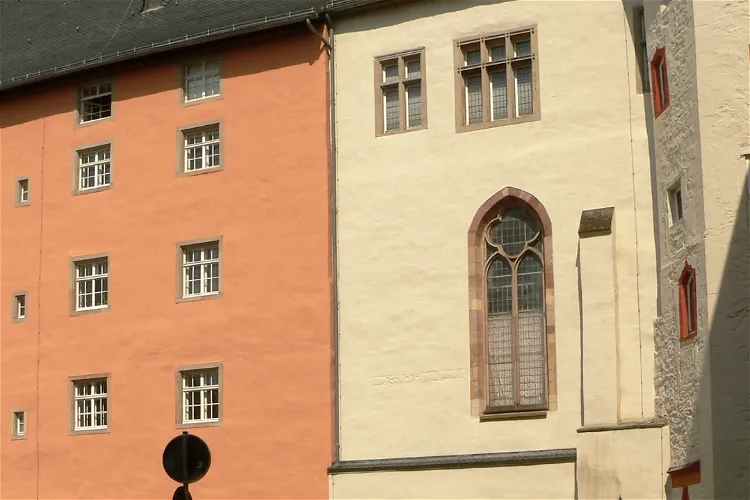
Städtisches Museum Hann. Münden
Hann. MündenThe Städtische Museum Hann. Münden is a museum situated in the town of Hann. Münden in Lower Saxony, Germany. It is housed in the Welfenschloss Münden, a historic castle that adds to the charm and historical significance of the museum.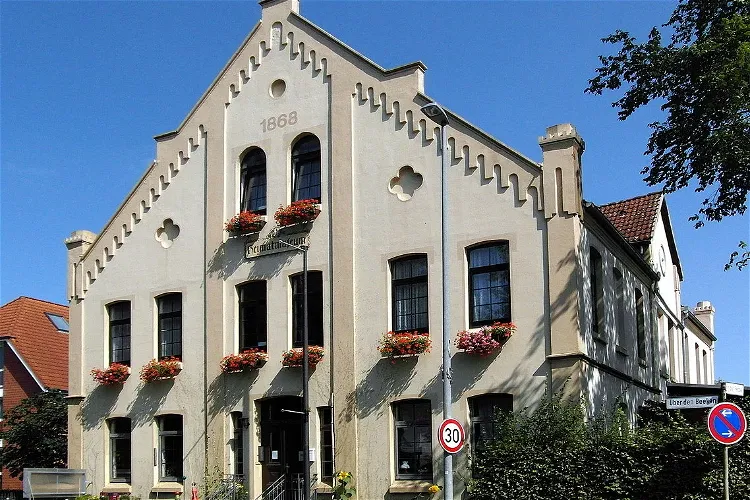
Heimatmuseum Rodenberg
RodenbergThe Heimatmuseum Ronnenberg is a local history museum situated in the city of Ronnenberg, in the Hanover region of Lower Saxony. This museum offers a deep dive into the history and culture of the region, making it an interesting destination for those who wish to understand the local heritage.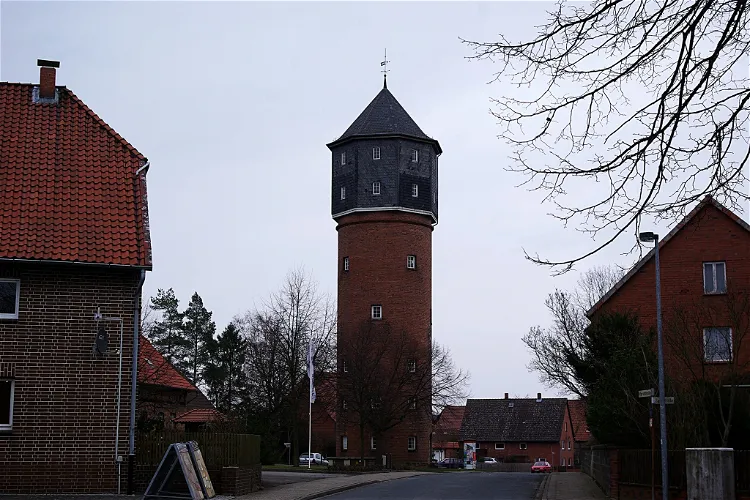
Wasserturm Groß Lafferde
Groß LafferdeThe Wasserturm Groß Lafferde is an industrial monument located in the municipality of Ilsede, Lower Saxony. It serves as a landmark for the town of Groß Lafferde, making it a significant point of interest for visitors. The tower's historical and architectural value contributes to the cultural richness of the region.- 66
Schlickmuseum
IhlowThe Schlickmuseum is situated in Riepe, a part of the East Frisian municipality of Ihlow. The museum has been operational since 1996, providing a historical perspective of the region for over two decades. - 67
Druckereimuseum
WildeshausenThe Druckereimuseum Wildeshausen is a privately run technology museum that is dedicated to the history of printing technology. It is located at Bahnhofstraße 13 in Wildeshausen. The museum provides a unique opportunity to delve into the evolution of printing technology, making it an interesting destination for those interested in history and technology. - 68
Heinrich-Büssing-Haus
WolfsburgThe Heinrich-Büssing-Haus in Wolfsburg - Nordsteimke is a museum that pays tribute to the work of Heinrich Büssing (1843–1929), a pioneer in the field of truck and bus construction. This museum is a testament to Büssing's significant contributions to the automotive industry and offers visitors a chance to delve into the history of this important figure. - 69
Deichmuseum Land Wursten
Wurster NordseeküsteThe Deichmuseum Land Wursten is a unique museum situated in the Dorum district of the Lower Saxony municipality of Wurster Nordseeküste. The museum's primary focus is on dyke construction and coastal protection, providing an in-depth look into these crucial aspects of coastal life. Visitors can gain a comprehensive understanding of the history, techniques, and importance of dyke construction and coastal protection. - 70
Krone Museum
SpelleThe Krone Museum, located in Spelle in the Emsland district of Lower Saxony, is a unique destination that showcases a wide range of agricultural machinery. It also provides an in-depth look into the history of the Bernard Krone machine factory, which was established in 1906 and has since grown into a global operation. This museum offers a fascinating insight into the evolution of agricultural machinery and the growth of a successful company.